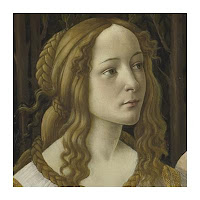Visiting the BMA

Going to the BMA on Thursday during class was definitely a lot of fun. Although we didn't have as much time to see all the artwork that the museum has on display I got to look at some pretty awesome pieces. The assignment this week was to choose three works of art and to sketch them in our sketch book, find the focal point, composition, eye path, and to say what interested us about the work of art. Below will be the three works of art that I chose to study. Rorschach by Andy Warhol, 1984 The first piece I decided to sketch was Andy Warhol's Rorschach. I chose this painting because I've always had an interest in modern and contemporary art and I really admire Andy Warhol's work. I thought this painting was interesting about it's an ink blot, like the one's that they use during therapy sessions. I liked the idea of the ink blot because usually when psychiatrists show you an ink blot they ask you "What do you see?". This goes back to my point in a ...
